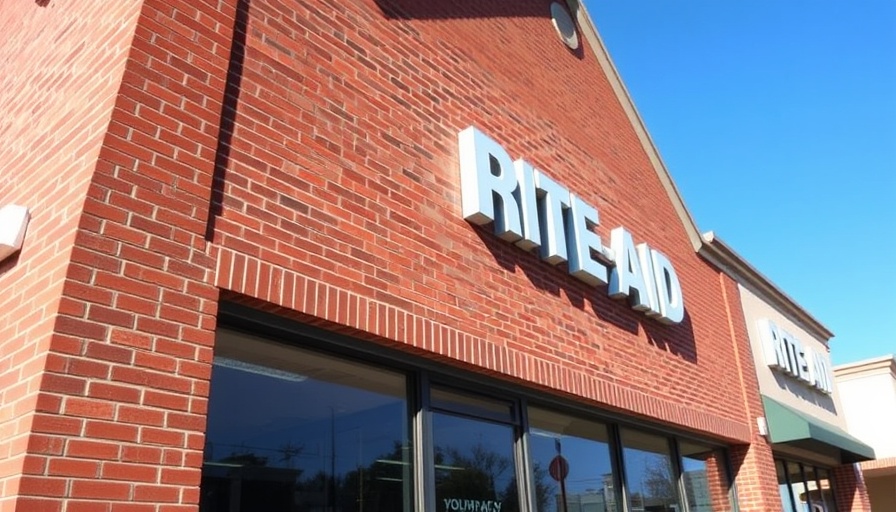
Rite Aid's Major Move: Over 1,000 Stores Sold Amid Financial Turmoil
In a substantial strategic realignment, Rite Aid has made headlines by selling more than 1,000 of its pharmacies to key competitors, including CVS and Walgreens. As the company grapples with the harsh realities of a second bankruptcy filing, this decision underscores the shifting dynamics within the pharmacy sector.
CVC Health's Acquisition Strategy
Among the notable buyers, CVS Health is taking the lead, acquiring prescription files from 625 Rite Aid locations across 15 states. This strategic move allows CVS to strengthen its existing presence in these areas while easing the transition for customers who will continue to fill prescriptions in familiar locations. The plan is pending approval by a New Jersey bankruptcy court.
Understanding the Roots of Rite Aid's Struggles
Rite Aid once boasted a robust portfolio with around 2,100 stores and a revenue of over $24 billion. However, relentless challenges such as increasing competition, particularly from online retail giants, coupled with stagnant reimbursement rates and rising labor costs, have pushed the company into uncertain waters. The opioid-related lawsuits have compounded these issues, forcing Rite Aid to part ways with many unprofitable stores while it navigates its massive $4 billion debt.
The Importance of Health and Wellness Access
This major transition in the pharmacy landscape has implications beyond corporate profits and losses. Access to reliable healthcare services is imperative for community wellness. Pharmacies serve as accessible health checkpoints for many individuals, especially in underserved areas. The shifts that occur as Rite Aid divests its stores may impact local health and wellness offerings, raising questions about how consumers will adapt to changing accessibility.
Future Envisioning: What Lies Ahead?
The positions CVS and Walgreens are carving for themselves suggest more consolidation in the health services market may be on the horizon. As these companies expand, will we see a shift toward more holistic health and wellness strategies, including resources such as nutritional supplements and alternative medicine? The online community discussions about health and well-being increasingly advocate for comprehensive care that incorporates both traditional and alternative approaches.
Counterarguments: Opportunities in Challenges
Some experts argue that Rite Aid's bankruptcy and subsequent sales, while tragic on one hand, open new opportunities for other health and wellness businesses. The emergence of community health initiatives may rise as local entities seek to fill the gaps left by traditional pharmacy chains. Innovative approaches to health and wellness could flourish, offering tailor-made solutions aimed at community needs and preferences. Entrepreneurial ventures focused on natural remedies and holistic health offer new pathways for engaging consumers seeking optimal health.
Empowering Consumers: Knowledge is Key
As these changes unfold in the pharmacy sector, consumers should educate themselves about their health and wellness options. Understanding local health resources, including potential offerings from new pharmacy operators, can empower individuals to manage their health more proactively. Exploring complementary and alternative medicine options, nutritional supplements, and community health programs allows for diverse health management methods aligned with personal lifestyles.
What Should Consumers Watch For?
With Rite Aid’s restructuring, consumers should remain vigilant about how these changes impact their local pharmacies. Will services such as prescription fulfillment be affected? What new partnerships might emerge between different health and wellness coaches and pharmacies? Keeping an eye on evolving developments can help consumers navigate their health decisions more intelligently.
In conclusion, the sale of over 1,000 Rite Aid stores marks a significant shift in the pharmacy landscape, prompting consumers to adapt and rethink their health and wellness strategies. The pathway toward optimal health and wellness continues to evolve, and engaging with local resources and alternative medicine might become more crucial as traditional models of care undergo transformation.
 Add Row
Add Row  Add
Add 




 Add Row
Add Row  Add
Add 


Write A Comment